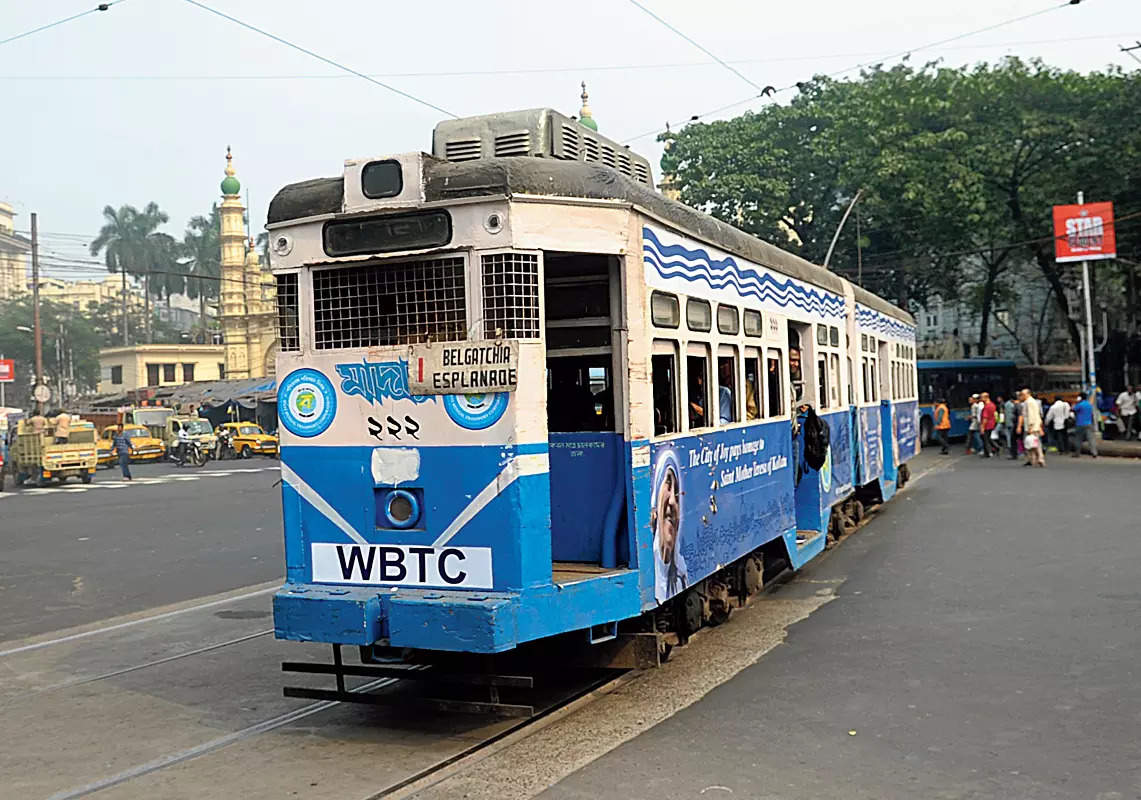
Currently Asia’s only tramway service, the iconic Calcutta Tramways, may have been discontinued on several routes in the city and some may consider it a misfit in a metropolis where traffic jams are frequent, but many want the services to continue.
Tram lovers have convinced authorities that the trundling busses on rails are not merely a heritage that needs to be preserved, but are also the cheaper and more eco-friendly alternative mode of transport.
“Kolkatans love their trams and we are working to make them more relevant again. We decided to take several initiatives to make it a more user-friendly mode of transport,” West Bengal Transport Corporation‘s Managing Director Rajanvir Singh Kapur told PTI.
Calcutta Tramways Users’ Association (CTUA) President Debasish Bhattacharya said, “We are campaigning for a return to a high-frequency tram service as it is both environment friendly and an inexpensive mode of transport.”
There is enough public support for tramways as it will help “lower air pollution, traffic congestion and tackle global warming”, and efficient tramway services will “benefit all sections of society”, he said.
Besides, Calcutta Tramways have all the requisite qualifications needed to gain the UNESCO World Heritage tag, and the authorities should work to win the status, Bhattacharya added.
Kapur said that tram routes have been restricted in recent years due to the metro expansion projects but once “it is completed and tram tracks are handed back to us, we will resume services”.
A colour-coded Calcutta Tramways map, highlighting various routes, has been prepared which will enable commuters to plan their movement in the city, he said.
A digital app ‘Pathadisha’ has been launched where people can book their tickets and pay online while free WIFI will also be made available to the commuters and air-conditioned tram services have also been initiated in some routes, the official said.
“Considering its heritage importance, we have also initiated several innovative ideas like libraries, an art gallery, museums and cafe in sync with the cultural and artistic ethos of the city,” Kapur said.
The library tram has gained popularity among youngsters, who earlier looked down with disdain on trams, but now consider it “cool and fashionable”, he said.
A children’s library with books donated by a well-known bookstore, a mobile art gallery set up in collaboration with the Italian consulate and three museums-the Partition Museum at its Nonapukur workshop, ‘Smaranika’ at Esplanade and ‘Tramworld’ at Gariahat depots, are the other major initiatives.
The ‘Partition Museum’, curated in collaboration with Amritsar’s Partition Museum, was inaugurated last year to commemorate 75 years of India’s Independence.
The museum on wheels has been designed using two older trams with the first car highlighting resistance against the British during the 1900-1947 period leading to Independence, the way in which the borders were drawn, the division of Bengal and Punjab and others.
The second car depicts the mass migration and rehabilitation that took place post-partition and explores the humane angle, an official of the Calcutta Tramways, Samiran Dey, pointed out.
The Smaranika Tram Museum with an air-conditioned cafe was inaugurated in 2014 at the Esplanade depot and provides archives of the earlier trams, coins, tickets and other memorabilia in the two coaches.
“Photo shoots and parties are organised here, particularly by foreign diplomats, to get a feel of old-world charm and it has made trams fashionable for the elite”, Samaranika’s caretaker Jalaluddin said.
Another museum Tram World Kolkata has been made by converting old trams into zones of art, music, photos, museum and food with a cafe coming up there too.